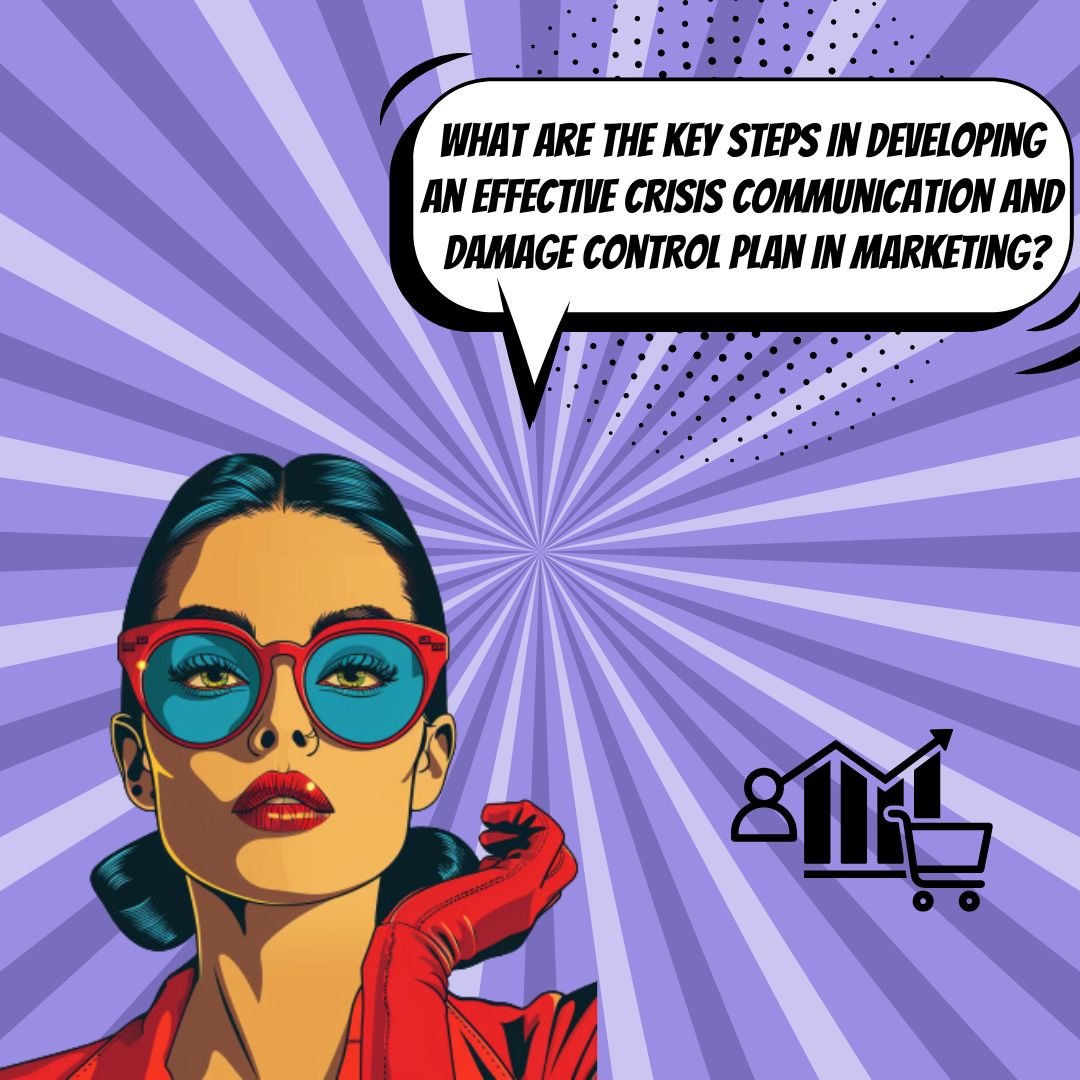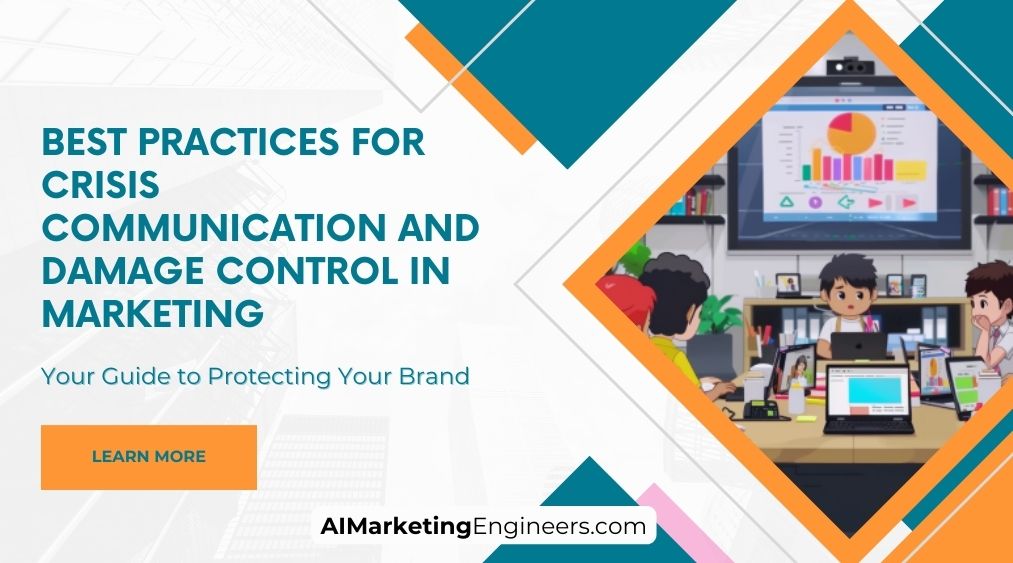Key Takeaways
✅ Be Proactive and Transparent: When trouble hits, it's crucial to step up immediately. Studies reveal that companies that act promptly and with full disclosure can reduce the long-term harm by up to 40%. Establishing an honest dialogue, owning up to mistakes, and clearly outlining corrective actions can help retain customer trust and loyalty during tough times.
✅ Communicate with Empathy and Authenticity: Customers aren't just numbers; their feelings matter. Surveys indicate that 85% of consumers are more forgiving to companies that respond to crises with genuine compassion and honesty. Whether issuing an apology or updating stakeholders, your tone should reflect a true understanding of their concerns and a firm commitment to make things right.
✅ Develop a Crisis Communication Plan: Don't get caught off guard. Companies with a solid crisis communication strategy can bounce back up to 50% faster than those without one. Your plan should define roles, pinpoint potential risks, spell out messaging strategies, and layout communication channels. Having this blueprint enables you to address issues swiftly, preserving your company's image.

Introduction
Have you ever watched a brand you love stumble into a scandal or crisis? It's an uncomfortable sight, isn't it? Even the most stalwart businesses can be rocked by the unexpected, making crisis communication and damage control not just a topic for academic discussion, but a real-world imperative. Whether it's a flawed product launch, a data breach exposing customer details, or a misguided marketing campaign, the way a company responds can either compound the damage or pave the road to recovery.
So, why is having a sound strategy for managing upheaval so critical? In the digital age, news travels fast and public opinion shifts even faster. Without effective techniques and a plan for defusing situations, your brand's reputation and bottom line could suffer dramatically. That's why we'll explore best practices that not just aim to limit the fallout but also reinforce your brand's integrity and customer trust.
This article isn't just about surviving a marketing earthquake; it's about thriving in its aftermath. We promise insights into not only weathering the storm but also coming out on the other side stronger. Stay with us as we reveal actionable wisdom that'll arm you with the tools for turning a potential public relations disaster into an opportunity for reaffirming your brand's value and resilience.

Top Statistics
| Statistic | Insight |
|---|---|
| Response Time Expectation: 70% of consumers expect a brand to respond to a crisis within one hour of it breaking. (Source: Sprout Social) | The speed of a brand's response to a crisis can be a game-changer in preserving customer trust. |
| Social Media Impact: 95% of crisis management professionals believe that social media has changed how crisis communication is approached. (Source: Deloitte) | Modern crisis management necessitates a strategic approach to social media, varying significantly from past practices. |
| Transparency in Crisis: 83% of consumers believe that a brand's transparency during a crisis is more important than the crisis itself. (Source: Sprout Social) | Beyond managing the incident, how openly a company communicates during a crisis can fundamentally affect consumer perception. |
| Impact on Purchasing Behavior: 88% of consumers are less likely to purchase from a company that has had a social media crisis. (Source: Brandwatch) | |
| Consumer Expectations for Company Accountability: 71% of consumers expect companies to take responsibility for their actions during a crisis. (Source: Edelman) | The message is clear: consumers demand accountability, and companies that take ownership can salvage respect and credibility. |
Crisis Communication and Damage Control in Marketing
Crisis communication and damage control are essential aspects of maintaining a brand's integrity and customer trust when things go awry. In the fast-paced world of marketing, a crisis can be anything from an unfortunate ad campaign to a massive data breach. Being equipped with a strategy for crisis management isn't just smart; it's crucial for survival. Brands with a well-oiled plan can weather the storm and emerge less scathed on the other side.

Identifying Potential Crises
To effectively mitigate risk, businesses must first understand the terrain of potential threats. Some crises, like product recalls or data breaches, can be significant and affect a vast number of consumers, while others, such as social media blunders, can tarnish a brand's image even if the actual harm is minimal. Conducting a thorough risk assessment and engaging in scenario planning are crucial steps in anticipating what could go wrong. By preparing for the worst, companies can ensure they're never caught off guard.
Establishing a Crisis Management Team
The call for a dedicated crisis management team is clear; when disaster strikes, there’s no time to waste assigning roles. This specialized team should have a well-outlined structure, with each member understanding their tasks. Equally critical is a clear crisis communication plan that outlines how to handle various scenarios and identifies key stakeholders. A swift and structured response can mean the difference between a quick recovery and long-term damage.
Communicating Transparently and Quickly
During a crisis, time and truth are of the essence. Transparent and timely communication is non-negotiable. Letting customers and the public know what has happened, what is being done, and what they can expect is key to retaining trust. Utilizing the right channels—whether it's a press release, social media, or email—is crucial. All messaging must strike a balance between empathy and authority, ensuring the audience feels heard and reassured.

Monitoring and Responding to Feedback
Once the communication is out, the next critical step is to keep an ear to the ground. Monitoring social media and other communication channels allows businesses to gauge the reaction to their crisis response. Feedback can be a litmus test for public sentiment, and prompt, empathetic responses to comments or queries help control the narrative and lessen the blow to a brand's reputation.
Learning and Adapting
Surviving a crisis should be viewed as a painful, yet invaluable learning experience. Learning and adapting from these incidents can prevent future mishaps. A thorough post-crisis evaluation is vital, leading to better-preparedness for any future issues. By implementing lessons learned, companies show their commitment to improvement and customer care, which can, in turn, enhance their reputation in the long run.
Key Takeaways from Crisis Management in Marketing
The realm of marketing is not without its mishaps, but with strategic crisis management and effective communication, brands can navigate through the rough patches. The keys to successful crisis mitigation include identifying potential threats, establishing and empowering a specialized crisis team, engaging with transparency and speed, attentively monitoring public response, and evolving from the experience. With these practices in place, companies stand a much better chance of maintaining customer trust and emerging from crises stronger than before.

AI Marketing Engineers Recommendation
Recommendation 1: Prioritize Transparency and Speed in Your Response: According to a study by PwC, 69% of leaders have experienced at least one corporate crisis in the last five years, and one of the consistent expectations from consumers during such times is transparency. Ensure your response plan addresses issues directly and quickly, ideally within the first 24 hours of the crisis emerging. The swift acknowledgment of the issue at hand demonstrates accountability and can help in maintaining trust with your audience.
Recommendation 2: Utilize Social Listening Tools to Monitor Brand Sentiment: Keeping a pulse on what consumers are saying about your brand is crucial, especially during a crisis. Social listening tools have gained prominence, making it possible to track real-time conversations and sentiment about your brand across different platforms. Current trends also show that proactive social listening and engaging with customer concerns helps in mitigating issues before they escalate. Implement these tools to understand the breadth and depth of the crisis and to inform your communication strategy.
Recommendation 3: Develop a Multi-Channel Crisis Communication Plan: In today's connected world, a crisis can spread like wildfire across various media channels. Forbes recommends having a multi-channel communication strategy that delivers consistent messaging across traditional media, social media, email, and your company website. This ensures that the message is received by as broad an audience as possible. Designate spokespeople and train them to handle inquiries across these channels. This strategy can help maintain coherence in your messaging and ensure that all your stakeholders are informed and aligned on the issues at stake.
Relevant Links
- Crack the Code of Chinese Social Media
- Conquer China's Short-Video Platforms
- Dominate the South Korean E-Commerce Scene
- Gain the Edge in China's Evolving Market
- Leverage the Power of Super Apps
Conclusion
When the storm hits in the marketing world – be it a rampant social media hiccup, a grim data breach, or an all-hands-on-deck product recall – the way a company communicates can make or break its future. At the heart of weathering these storms is crisis communication and damage control, two cornerstones of smart marketing that are non-negotiable in the digital age. It's not about if a crisis will occur; it's about when. And when that time comes, the difference between a stumble and a fall often lies in preparation and agility.
The discussions above have made one thing crystal clear: an ounce of prevention is worth a pound of cure. Engaging in thorough risk assessment and solidifying both a crisp management team and a crisis communication plan are investments in a brand's longevity. When crisis does strike, the speed and transparency of your response, coupled with the empathy your messaging conveys, can preserve customer trust. How you respond publicly should mirror how swiftly and meticulously you're addressing the issue internally.
But a crisis is not the end. It's a beginning of sorts, an opportunity to learn and adapt. Monitoring feedback, engaging with your community, and conducting post-crisis evaluations are more than damage control tactics; they are windows to evolve and emerge stronger.
To every marketer out there: how equipped are you to face tomorrow's challenges? Are your crisis plans up to date, and is your team ready to act at a moment's notice? In a landscape where consumer trust is as valuable as the products or services you offer, investing in best practices for crisis communication and damage - a move that fortifies your brand for whatever lies ahead.

FAQs
Question 1: What is crisis communication and damage control in marketing?
Answer: Crisis communication and damage control in marketing refer to the strategic management of an organization's communication when dealing with unexpected events that could hurt its reputation or how people see it.
Question 2: Why is crisis communication and damage control important in marketing?
Answer: They're so important because they help businesses keep the trust, look credible, and keep a good name. They can soften the blow of bad stuff, save important relationships, and help you bounce back quicker.
Question 3: What are the key steps in crisis communication and damage control?
Answer: Here's what you've got to do:
- Figure out what's going on, fast.
- Make a message that's clear and the same everywhere.
- Work out who you need to talk to and then talk to them.
- Watch how the media and people are reacting, and respond.
- Sort it out and fix what’s broken.
- Look back, see what you can learn, and get better for next time.
Question 4: How can an organization prepare for potential crises?
Answer: To be ready for anything, organizations can:
- Make a plan for how to talk during a crisis.
- Think about what could go wrong.
- Decide who does what.
- Train staff on what to do if things go south.
- Practice disaster drills.
Question 5: What is the role of social media in crisis communication and damage control?
Answer: Social media is super important because it lets companies see and reply to what people are thinking and feeling as it happens. They should have a game plan for crisis situations on social media.
Question 6: How can an organization maintain transparency during a crisis?
Answer: To keep things clear during tough times, companies should:
- Talk straight and truthfully to people involved.
- Give the lowdown on what's happening regularly.
- Deal with worries and questions fast.
- Own up to mess-ups and be ready to make them right.
Question 7: What is the importance of empathy in crisis communication and damage control?
Answer: Empathy is huge because it lets organizations show they get what people are feeling. It can really help build trust and show you're genuine when things go wrong.
Question 8: How can an organization recover from a crisis?
Answer: To get back on track, companies should:
- Fix what went wrong.
- Tell people what they're doing to make things better.
- Keep an eye on how people are feeling and talk back to them.
- Work on earning their trust again.
- Learn from the mess and change stuff so it doesn't happen again.
Question 9: What are some advanced topics in crisis communication and damage control?
Answer: Some deeper stuff you might get into includes:
- Looking after your reputation.
- Taking charge in a crisis.
- Thinking about the law and rules.
- Dealing with disasters worldwide.
- Figuring out this crisis talk in today's online world.
Question 10: What practical advice can you provide for professionals in crisis communication and damage control?
Answer: For those on the front lines, remember to:
- Stay cool and collected.
- Be ahead of the game and ready to act.
- Be open and honest.
- Keep your ear to the ground and be ready to chat.
- Learn from what’s happened before and switch things up to avoid the same trouble in the future.

Academic References
- Coombs, W. T., & Holladay, S. J. (2014). Crisis Communication and Crisis Management: An Ethical Approach. In P. L. Daymon, & C. Holloway, Public Relations Ethics (pp. 231-244). Routledge. This article inspects contemporary crisis communication and management strategies, advocating for an ethical approach that includes honesty, timeliness, and empathy during a crisis situation.
- Coombs, W. T. (2016). Ongoing Crisis Communication: Planning, Managing, and Responding. SAGE Publications. This book acts as a guide, shedding light on crisis communication best practices, underscored by real-life examples and extensive research. It discusses the importance of being ready, staying transparent, and engaging with key players to navigate crises well.
- Yang, J., Ji, Y. G., & Liu, B. F. (2017). Harnessing the power of social media during times of crisis. Journal of Public Relations Research, 29(2), 109-128. Investigating the impact of social media on crisis communication, this article emphasizes the critical need for timely responses and open dialogue, all the while touching on the complexities and benefits of leveraging social platforms in a crisis.
- Liu, B. F., & Coombs, W. T. (2014). Beyond the crisis: The implication of crisis communication for reputation management. Public Relations Review, 40(3), 377-385.
This comprehensive study explores how crisis communications shape the public's perception and the overall outcome following a crisis event, highlighting key factors that contribute to safeguarding a brand's reputation. - Ji, Y. G., Yang, J., & Liu, B. F. (2015). Advancing crisis communication effectiveness: Integrating public relations strategies with social media applications. Public Relations Review, 41(3), 294-308. Through a synthesis of existing research, this article details the critical impact of social media in crisis situations and the importance of strategies like constant monitoring, swift action, and engaging with the public to control and resolve crises.






